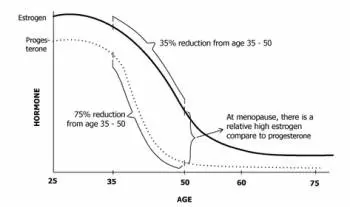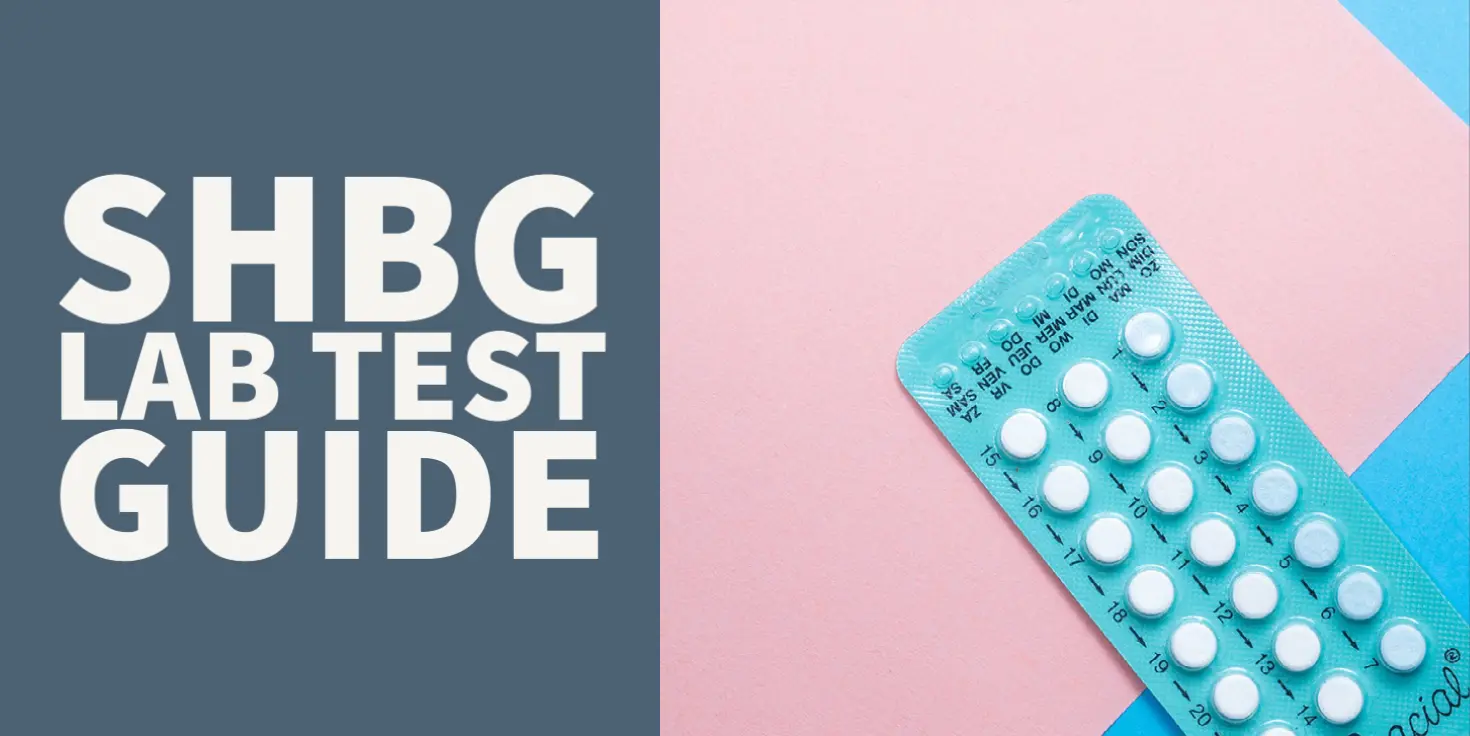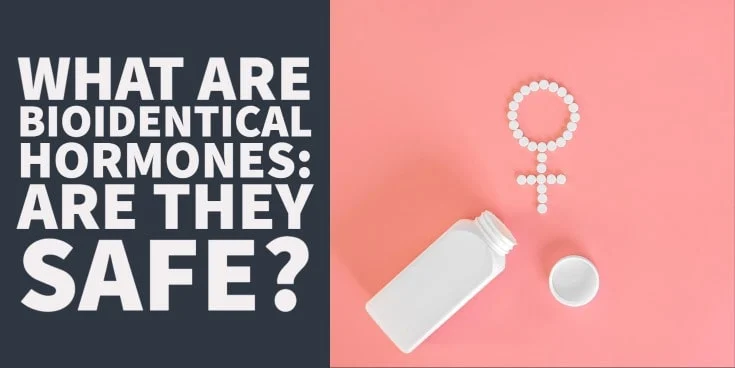SHBG is short for sex hormone binding globulin and it is a serum blood test that can give you valuable insight into your hormones!
Low levels of SHBG may be associated with low thyroid function and low estrogen status while high levels may bind up testosterone leading to weight gain, depression, and other symptoms.
Most physicians don’t put a lot of emphasis on this lab test but it is critical to understanding what is happening with the hormones in your body.
Learn how to understand your lab results, but more importantly what to do about changes to your SHBG.
We will discuss high levels, and low levels, and what to do about both:
Sex Hormone Binding Globulin – Why it is important
So what is SHBG?
SHBG stands for Sex Hormone Binding Globulin.
And it does exactly what it sounds like it does – binds up sex hormones.
But why is this important?
In order to understand we need to talk about some basic physiology.
First, you need to know that hormones float around in your serum in 2 major forms:
#1. Bound to proteins (1) -> the binding of hormones to certain proteins leaves them INACTIVE.
If a hormone is bound to a protein it is NOT available for use.
Consider this like hormones that your body “stores” for later use, similar to you putting food in a deep freezer.
#2. Free and active -> if a hormone is not bound to a protein it is considered “free” and can actually enter into cells and do its job.
Free hormones (such as “free t4” or “free testosterone”) can turn on cellular function and promote genetic changes.
*Side note: this reasoning is why it’s so important to check your free thyroid hormones if you have hypothyroidism. Checking “total t3” or “total t4” has less clinical utility than the free hormones!

You can consider the free hormones as the ACTIVE hormones and the more clinically useful measurement of almost all hormones.
The amount of “free” hormone is usually a VERY small percentage when compared to the “bound” hormone in your blood.
Your body uses this binding system as a way to regulate certain hormones and keep everything in balance or in check.
So where does SHBG fit in?
Sex hormone-binding globulin acts as a binding hormone which means that it may be helpful to think of SHBG as a way to inactive hormones floating around in your serum.
For this reason, you can consider SHBG to be a “Goldilocks” type of protein, meaning you don’t want too much but you also don’t want too little – you need just enough.
Small changes to SHBG levels can bind up free hormones and result in serious symptoms.
It also has a strong affinity (meaning it likes to bind) to certain sex hormones.
It will preferentially bind to hormones in this way:
Preference on dihydrotestosterone or DHT (2) (this is the most potent androgen), then testosterone, then androstenediol, then estradiol, then estrone.
You will notice that SHBG prefers to bind to and inactivate the various androgens in the body.
This is very important because of how this impacts androgens and therefore symptoms in both women and men.
High SHBG will bind up and INACTIVATE both testosterone and DHT meaning that both men and women may start to experience the symptoms of low testosterone (weight gain, depression, loss of muscle mass, irritability, etc.).
While low levels will leave more testosterone ACTIVE meaning that women may start to experience the symptoms of high testosterone (facial hair growth, weight gain, PCOS, irritability, acne, etc.).
What’s worse is that most physicians don’t even test for SHBG even though they understand the difference between “free” and “total” hormone concentration in the blood.
This makes SHBG a VERY important test to ask for if you are experiencing hormone any hormone imbalance as it may shed light on your current problem.
What Causes Increased SHBG?
SHBG is influenced by 2 major hormone systems in the body:
#1. Thyroid hormone (3) and…
#2. Estrogen levels (4).
Both of these hormones may stimulate or INCREASE the circulating amount of sex hormone-binding globulin in the serum.
So what does that mean for you if you have high SHBG?
If you are a woman and you have high SHBG the most likely cause is excessive estrogen use.
This can be either from a condition known as estrogen dominance – meaning you have too much estrogen in your serum.
Or because you are taking birth control (5) or some other form of exogenous hormones.
If you are taking OCP or other hormones and it is causing excessively high levels of SHBG you should take caution!
Increasing your SHBG will influence the amount of free testosterone in your serum and may be one of the reasons that women on OCP tend to gain weight and experience mood changes (6).
Another cause of high SHBG is excessive thyroid hormone replacement therapy.
This is most often seen in those who are taking T3-containing medications (T3 has a direct influence on hepatic SHBG production) like natural desiccated thyroid hormone or liothyronine/cytomel.
It can also occur in those taking T4 medication such as Levothyroxine, but this is less common.
Assessing SHBG accurately in menstruating women can be difficult, though, as women may commonly present with both excess estrogen and hypothyroidism.
If you are taking thyroid hormone replacement and your SHBG is high you should look at both estrogen levels and your current thyroid dose.
But how do we “define” a high SHBG?
Like other hormones, we need to look at “optimal ranges” and not just the reference range.
If you are a woman you want your SHBG to be in the 60-80 nmol/L range.
Anything higher is considered “too much” and anything lower is considered “insufficient”.
You can see an example of high SHBG below with relevant laboratory reference ranges:

Symptoms of High SHBG
It’s important to realize that high SHBG doesn’t necessarily cause negative symptoms by itself. Instead, symptoms related to your SHBG may be due to an indirect effect that SHBG has on other hormones in your body.
If you have high SHBG you are more likely to experience negative symptoms related to excess estrogen and/or low testosterone:
- Menstrual irregularities
- Weight gain (pear shape weight gain)
- Mood changes (depression or anxiety)
- Breast tenderness, breast fullness
- Fatigue
- Bloating and/or water retention
- Decreased muscle mass (inability to gain muscle mass even while lifting weights)
Rarely, high SHBG may also be caused by excessive thyroid dosing which may lead to the symptoms of hyperthyroidism as well.
What Causes Low SHBG?
In my experience low SHBG is often ignored (more so than high levels) because it’s more sinister and difficult to spot.
Low SHBG is most often seen in women who are hypothyroid (meaning they have low thyroid function) and women who are menopausal.
We know that both thyroid hormone and estrogen stimulate SHBG (7) release, so low levels are often associated with low hormone levels.
This in turn causes an effect where free testosterone levels rise giving way to the symptoms of PCOS.
If you are experiencing the symptoms of hypothyroidism then it’s VERY important to evaluate your SHBG.
This is also true if you are taking thyroid hormone replacement medication.
SHBG is considered “suboptimal” if it is lower than 60 nmol/L:

If you are a menstruating woman (and have a normal cycle) then the most common cause of suboptimal SHBG is low thyroid function.
It’s also worth pointing out that low SHBG is associated with an increased risk of developing type II diabetes (8) – another important reason why you want to normalize your level if it is low.
Symptoms of Low SHBG
The symptoms of low SHBG tend to be tied to thyroid function and low estrogen.
In addition, women with low SHBG may also experience the side effects of excess free testosterone:
- Weight gain
- Fatigue or low energy
- Menstrual irregularities
- Facial hair growth
- Hair loss
- Acne
- Depression/anxiety
Please note that the symptoms associated with low SHBG can vary widely from individual to individual.
For this reason, it’s always best to assess SHBG in the context of other circulating hormones (testosterone, estrogen/progesterone, and thyroid hormone).
Using SHBG for Assessing Thyroid Function During Thyroid Hormone Replacement Therapy
Another very important clinical utility of SHBG is its ability to assess thyroid function.
With up to 20% of the population suffering from subclinical hypothyroidism or overt hypothyroidism, this hormone imbalance is incredibly common.
Furthermore, SHBG is a tool that can help evaluate thyroid function at the cellular level.
In states of low thyroid function, the SHBG tends to drop.
When thyroid hormone is replaced, SHBG tends to rise.
This allows for the SHBG to be used as a marker to assess thyroid hormone absorption and thyroid hormone cellular action.
If you have low SHBG AND hypothyroidism then testing your SHBG at baseline is very important for assessing if you are taking the right type and dose of thyroid hormone.
In some cases, taking T4-only thyroid medication such as Levothyroxine or Synthroid may not actually increase the SHBG (9).
This may be a sign that the body is having difficulty with the conversion of T4 to T3 in peripheral tissues.
Remember:
T3 tends to increase SHBG more so than T4 levels.
SHBG can also be used to assess if your thyroid dosing is too high.
If your SHBG is elevated AFTER you take thyroid hormone then this may indicate that your thyroid dosing is excessive and should be reduced.
It’s very important to keep SHBG in the “Goldilocks” range of 60-80 nmol/L.
How to Treat High SHBG (how to lower it when it’s high)
Treating high SHBG has more to do with finding out the CAUSE of high SHBG in your body, rather than treating the SHBG level itself.
With that in mind if you have high SHBG you will want to take the following steps to find the root cause:
#1. Check serum estrogen levels
The first step is to assess both estrogen and progesterone levels.
This means assessing estradiol (the most potent estrogen in your serum) as well as progesterone.
Estradiol levels vary from woman to woman so the absolute value is not as important as the difference in the ratio between progesterone and estradiol.
It’s best to assess the estradiol/progesterone ratio mid-luteal phase of the menstrual cycle (if menstruating).
Look for a ratio that is 10:1 (estrogen:progesterone).

If you have high levels of estrogens in your body (or low progesterone) you can find more information about treating both here.
#2. Check free thyroid hormones (consider altering your thyroid hormone dose)
If your estrogen:progesterone ratio is not an issue then your high levels may be related to thyroid function.
At a minimum, make sure to assess both free T3 and free T4 levels (but really you should check a complete thyroid panel).
Excessively high free T3 and/or free T4 may be the cause of high SHBG in individuals taking thyroid hormone replacement medication (especially if it contains T3).
#3. Consider alternatives to OCP if you are taking birth control medication
One of the most common causes of high SHBG is the use of oral contraceptives or birth control medications.
The only way to lower SHBG if it’s related to these medications is to discontinue their use.
You should discuss this option with your physician and talk about other options (depending on why you are using them in the first place).
If you are using OCP medications for birth control then you may find better results switching to a form of birth control that does not include hormones such as the copper IUD.
How to Treat Low SHBG (how to increase it when it’s low)
Low SHBG tends to be more difficult to treat than high SHBG.
If you know that you have “suboptimal” SHBG then you will need to look at the following areas:
#1. Get a complete thyroid lab panel
If you are a menstruating woman with low SHBG then this is the most important first step to take.
To get a full thyroid panel you will need the following tests:
Once you get all of these tests you can compare your set of labs to optimal thyroid lab tests and determine if your thyroid is contributing to your SHBG level.
If it is, then you will need to take steps to increase thyroid function in your body either by taking thyroid hormone replacement therapy or by increasing thyroid function naturally.
#2. Assess your estrogen/progesterone ratio (especially if menopausal)
This is really only important if you are menopausal.
After menopause estrogen levels fall which can cause SHBG to drop.
Some menopausal women are sensitive to this small drop and therefore may benefit from bio-identical hormone replacement therapy.
#3. Check free testosterone levels
Low SHBG may indirectly leave more testosterone in the free and active state.
You can determine if this is happening in your body by assessing the free testosterone in the serum.
The combination of low thyroid function and low SHBG causes many of the symptoms seen in PCOS.
If you think this might be happening to you, then the best treatment is to get on the right thyroid hormone replacement medication which is often enough to normalize SHBG and help alleviate many of the symptoms of PCOS.
There are many other causes of PCOS, however, so this may not work for everyone.
Back to you
The bottom line?
This binding protein gives you important information about what is happening with various hormones in your body.
High SHBG is often caused by excessive estrogen levels while low SHBG is often the result of hypothyroidism (or low thyroid function).
The key to treating SHBG is to identify what is causing the abnormality and fix that problem.
This will help normalize SHBG levels in your serum and should help to reduce your symptoms.
Now I want to hear from you:
Do you have abnormalities in your SHBG level?
Have you been able to identify what is causing the problem?
Why or why not?
Leave your comment below!
Scientific References
#1. https://www.ncbi.nlm.nih.gov/pubmed/2673754
#2. https://www.ncbi.nlm.nih.gov/pubmed/1637726
#3. https://www.ncbi.nlm.nih.gov/pubmed/9368511
#4. https://www.ncbi.nlm.nih.gov/pubmed/9005961
#5. https://www.ncbi.nlm.nih.gov/pubmed/16409223
#6. https://www.ncbi.nlm.nih.gov/pmc/articles/PMC3845679/
#7. https://www.ncbi.nlm.nih.gov/pubmed/7749500
#8. https://www.ncbi.nlm.nih.gov/pmc/articles/PMC2648802/
#9. https://www.ncbi.nlm.nih.gov/pubmed/7787428








